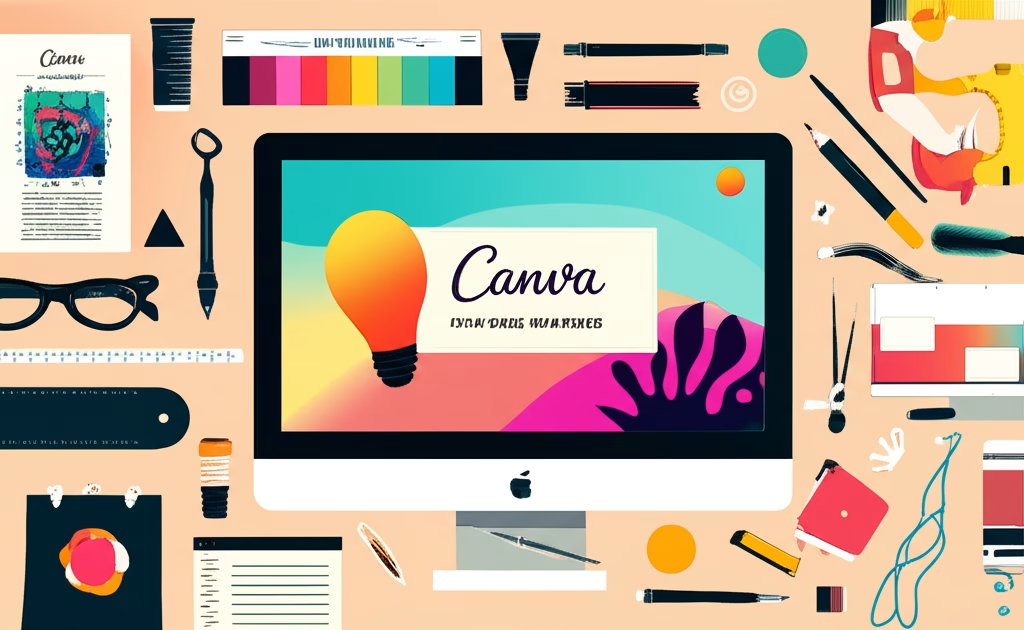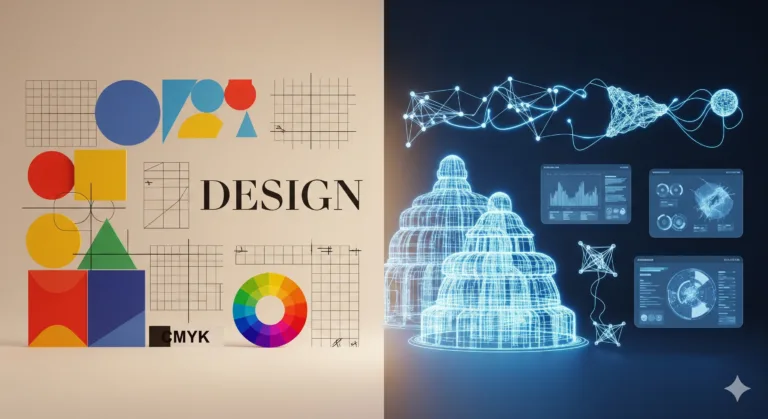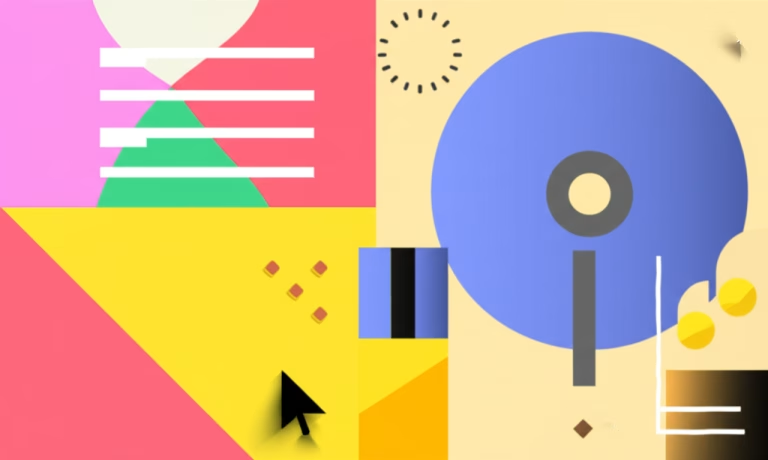The Transformation That Simplifying Design Can Bring
Have you ever looked at a design and felt overwhelmed? Too many elements, too much clutter, nowhere for your eyes to rest? It happens to everyone, especially when you’re starting out and want to show off everything you know. But what if I told you that often, less is truly more? Learning to simplify design isn’t about making things boring; it’s about making them powerful, clear, and effective.
Imagine creating visuals that immediately grab attention for the right reasons, guiding your audience effortlessly through information. This isn’t magic; it’s the art of thoughtful reduction. By mastering design impact through simplicity, you unlock a new level of confidence and skill. This guide will show you how to strip away the unnecessary and amplify what truly matters.
Table of Contents
The Hidden Power of Simple Design
At its heart, simplicity in design is about clarity and focus. It’s not about removing elements randomly, but about making intentional choices to highlight the most important parts. Think of iconic designs like the Apple logo or Google’s homepage – they are powerful because they are simple, direct, and instantly recognizable.
This approach leverages cognitive ease. When a design is simple, the viewer’s brain doesn’t have to work hard to process it. This frees up mental energy, allowing the message or purpose of the design to land more effectively. It’s about creating a clear path, reducing distractions, and ensuring your message is heard loud and clear.
The 3 Dimensions of Design Simplicity
1. Clarity (Functional Dimension)
The functional dimension of simplicity is all about making your design easy to understand and use. Can someone quickly find the information they need? Is the call to action obvious? This is where clean design shines, ensuring navigation is intuitive and the message is straightforward, reducing user frustration.
- Make information easy to scan and read.
- Guide the user logically through the content or interface.
2. Emotion (Emotional Dimension)
Simplicity isn’t just logical; it’s emotional. A simple design can evoke feelings like calm, trust, sophistication, or even joy. Think of a beautifully minimal website or a clean, elegant poster. This emotional response builds connection and makes the design more memorable and impactful on a deeper level.
- Use space and limited elements to create a feeling or mood.
- Allow key visuals or messages to breathe and resonate emotionally.
3. Elegance (Aesthetic Dimension)
The aesthetic dimension is the visual beauty that often comes with simplicity. It’s the clean lines, harmonious proportions, and thoughtful use of space. This is where minimalist design principles often overlap, creating visuals that are pleasing to the eye and feel polished and professional, enhancing perceived quality.
- Focus on strong composition and visual balance.
- Emphasize quality over quantity in visual elements.
Advanced Techniques That Make the Difference
Mastering White Space (or Negative Space):
White space is the area around and between design elements. It’s not just empty space; it’s a powerful tool that gives elements room to breathe, improves readability, and creates a sense of structure and sophistication. Using it strategically instantly elevates your effective design.
Expected result: Improved readability, stronger focus on key elements, a sense of elegance and clarity.
Strategic Use of Visual Hierarchy:
Hierarchy is about organizing elements to show their relative importance. By making the most crucial information stand out through size, color, placement, or contrast, you guide the viewer’s eye. This is a core design principle for simplifying the user’s journey through your work.
Expected result: Users grasp the main message quickly, improved navigation, clear path through complex information.
Limiting and Harmonizing Design Elements:
Instead of using countless fonts, colors, and shapes, choose a limited palette and use it consistently. Stick to one or two fonts, a cohesive color scheme, and essential graphic elements. This restraint creates harmony and reduces visual noise, making the design feel unified and intentional.
Expected result: Cohesive and professional look, reduced visual clutter, easier decision-making during the design process.
Obstacles That Can Limit Your Potential
Learning to simplify is a journey, and you’ll encounter hurdles. It’s important to recognize them so you can move past them and continue to grow your skills in creating simple design that works.
- The Fear of Being Boring
This is a common mindset. You might feel like a simple design isn’t “enough” or won’t be noticed. You might worry it looks unfinished.
How to overcome: Study truly impactful simple designs. See how they use subtlety and focus to create intrigue and power, rather than relying on busyness. Trust that clarity is compelling. - Not Knowing What to Remove
When faced with a complex draft, it’s hard to decide which elements are essential and which are just decoration. You might be attached to certain ideas or visuals.
How to overcome: Start with the core message or goal. Ask yourself for each element: “Does this help achieve the goal?” If not, consider removing or simplifying it. Prioritize function and message over ornamentation. - Lack of Confidence in Simple Solutions
Presenting a very simple design can feel vulnerable, especially to clients or peers who might expect something more elaborate for their money or effort.
How to overcome: Be prepared to explain the *why* behind your simple choices. Articulate how white space improves readability, how limited colors create harmony, and how clear hierarchy ensures the message is understood. Frame simplicity as a strategic advantage, not a lack of effort.
Your Journey to Mastery in Simple Design
Mastering the art of simplification takes practice and observation. It’s a skill that develops over time, changing how you approach every project. Embrace the process and enjoy the clarity it brings to your creative work and your thinking.
Beginner Level (0-3 months)
Focus on understanding the core concepts: white space, basic hierarchy, limited palettes. Practice taking existing designs and trying to remove elements while keeping the message clear. Analyze simple logos and websites, identifying what makes them effective.
Intermediate Level (3-12 months)
Actively apply simplification techniques to your own projects from the start. Experiment with different levels of minimalism. Learn more about typography and color theory to make limited choices powerful. Seek feedback specifically on the clarity and effectiveness of your simplified designs.
Advanced Level (1+ years)
Simplification becomes an intuitive part of your process. You can quickly identify unnecessary elements and structure information clearly. You can articulate the value of simplicity to others and even teach the principles. You use simplicity to tackle complex problems and create truly innovative solutions.
Questions That Shape the Future of Simple Design
As design evolves, so does the application of simplicity. Thinking about these questions can help you stay ahead and deepen your understanding of creating design impact.
Q: Is minimalist design just a passing trend, or is simplicity here to stay?
A: While “minimalism” as a style might change, the core principle of clarity and effectiveness through simplicity is timeless and fundamental to good communication and design.
Q: How can I use simple design principles in complex projects like data visualization or large websites?
A: Focus on creating clear hierarchy, using white space to group related information, and employing consistent, limited visual styles to make complex data or navigation digestible and user-friendly.
The Beginning of Your New Creative Era
Embracing simplicity in your design process is like gaining a superpower. It allows you to cut through the noise and create work that is not only beautiful but also incredibly effective and memorable. Don’t be afraid to start stripping away the excess.
Practice these techniques, look for inspiration in the world around you, and trust that your designs will become stronger, clearer, and more impactful. This is just the beginning of creating designs that truly resonate.



